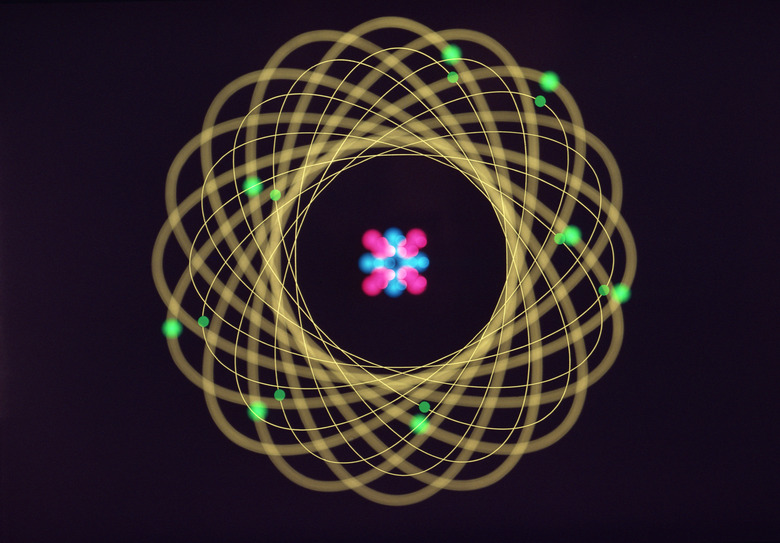Why Are Atomic Emission Spectra Discontinuous?
Energized electrons need to release energy in order to return to their stable state. When this release happens, it occurs in the form of light. Hence, atomic emissions spectra represent the electrons in an atom returning to lower energy levels. Due to the nature of quantum physics, electrons can absorb and emit only specific, discrete energies. Every element has a characteristic arrangement of electron orbitals and energies that dictates what color the emission lines will be.
The Quantum World
The Quantum World
While many of the things we perceive are dictated by classical, continuous mechanics, the atomic world is dictated by discontinuity and probability. The electrons in an atom exist at discrete energy levels with no middle ground. If an electron is excited to a new energy level, it jumps up to that level instantaneously. When electrons return to lower energy levels, they release energy in quantized packets. You can contrast this with a fire that slowly burns out. A burning fire emits energy continuously as it cools and eventually burns out. An electron, on the other hand, emits all of its energy instantaneously and jumps to a lower energy level without passing through a transitional state.
What Determines the Color of Lines in an Emission Spectrum?
What Determines the Color of Lines in an Emission Spectrum?
Energy from light exists in packets called photons. Photons have different energies that correspond to different wavelengths. Therefore, the color of emission lines reflects the amount of energy released by an electron. This energy changes depending on the orbital structure of the atom and the energy levels of its electrons. Higher energies correspond to wavelengths towards the shorter, blue end of the visible light spectrum.
Emission and Absorption Lines
Emission and Absorption Lines
When light passes through atoms, those atoms can absorb some of the light's energy. An absorption spectrum shows us which wavelength from light were absorbed by a particular gas. An absorption spectrum looks like a continuous spectrum, or rainbow, with some black lines. These black lines represent photon energies absorbed by electrons in the gas. When we view the emission spectrum for the corresponding gas, it will display the inverse; the emission spectrum will be black everywhere except for the photon energies that it previously absorbed.
What Determines the Number of Lines?
What Determines the Number of Lines?
Emission spectra can have a large number of lines. The number of lines does not equal the number of electrons in an atom. For example, hydrogen has one electron, but its emission spectrum shows many lines. Instead, each emission line represents a different jump in energy that an electron of an atom could make. When we expose a gas to photons of all wavelengths, each electron in the gas may absorb a photon with exactly the right energy to excite it into the next possible energy level. Hence, the photons of an emission spectrum represent a variety of possible energy levels.
Cite This Article
MLA
Murmson, Serm. "Why Are Atomic Emission Spectra Discontinuous?" sciencing.com, https://www.sciencing.com/why-are-atomic-emission-spectra-discontinuous-12730485/. 7 October 2013.
APA
Murmson, Serm. (2013, October 7). Why Are Atomic Emission Spectra Discontinuous?. sciencing.com. Retrieved from https://www.sciencing.com/why-are-atomic-emission-spectra-discontinuous-12730485/
Chicago
Murmson, Serm. Why Are Atomic Emission Spectra Discontinuous? last modified August 30, 2022. https://www.sciencing.com/why-are-atomic-emission-spectra-discontinuous-12730485/
